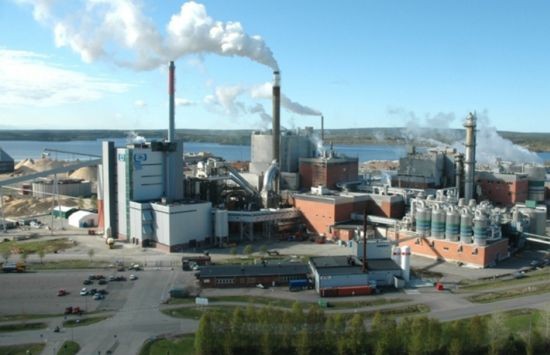Convert black liquor into biogas
Chemrec has developed a new technique for gasification of black liquor, a waste product from pulp mills. Conversion of black liquor from pulp mills to biofuel via gasification has opened up a new market for the pulp industry. The BioDME project aimed to demonstrate production and use of the new biofuel in transport.

The challenge
Many new innovations must be developed to replace finite and polluting fossil fuels to reduce the environmental impact, particularly for transports since it represent large proportion of emission.
The innovation
The Swedish biorefinery Chemrec operates a demostration plant for black liquor gasification located in Piteå, Sweden. The company has developed a unique technology to produce biofuel from gasifying black liquor, generated when producing paper pulp.
The European BioDME-project aims to demonstrate the feasability of an environmentally optimised synthetic biofuel at an industrial scale. The project is a partnership between Chemrec, Volvo, Preem, Total, Haldor Topsoe and Delphi and ETC, all among the leading companies in their fields.
The project has received financial support from the Swedish Energy Agency, the European Seventh Framework Programme (FP 7) and from all parties involved in the project (venture capital for devlopment, demonstration and commercial exploitation).
The synthetic gas, produced by the gasification of black liquor, can be converted into sustainable and low carbon fuels such as dimethyl ether (DME) and methanol.
First, methanol is produced catalytically from the synthetic gas, and then DME is produced via a reaction between two molecules of methanol over a catalyst.
DME has proven suitable as fuel in diesel engines and has great potential due to its high energy efficiency and comparatively low greenhouse gas emissions.
Black liquor is generally used to supply the energy to the pulp mill's own operation. To replace the lost energy due from the black liquor that is converted to fuel, biomass such as branches and tops from the forest are added. The result is a combined process that can produce both pulp and new fuels. This integrated biorefinery concept promises new revnenues and increased profitability for the pulp and paper industry.
Why did it work?
The innovation is both cost and energy efficient as it integrates a new fuel refining business with the existing pulp and paper production through the more profitable exploitation of a waste product.
Further deployment
The technology in its final form is ready for commercial deployment. Hence, the innovation achieves level 9 of the TRL scale. The project was running between 2008 and 2012.
Links:
COWI websiteThe brochure of the project